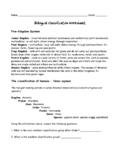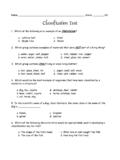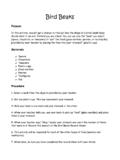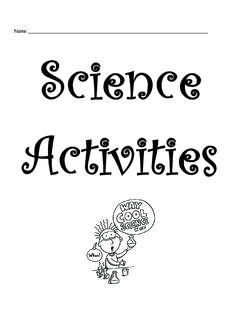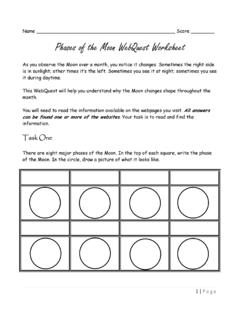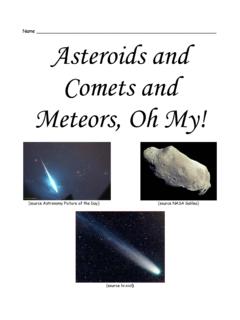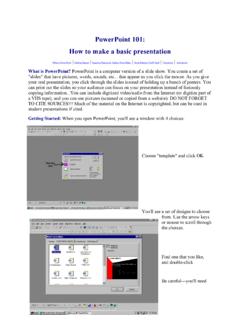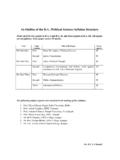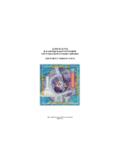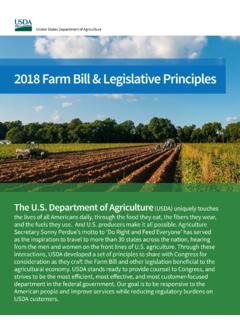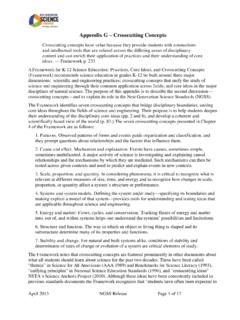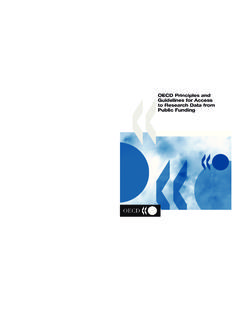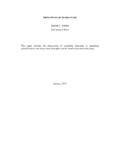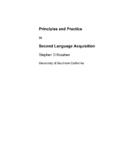Transcription of Name Principles of Matter - Mr. Hill's Science …
1 name _____. Principles of Matter Science Language Students Should Know and Use Atmosphere - The layers of air that surround Earth. The densest atmospheric layers are closer to Earth and the least dense layers are far away from Earth. Atom - The smallest particle of a chemical element which has all the properties of that element. Crust - The solid outermost layer of Earth. Density - A comparison of the mass of a substance with its volume. Mathematically, density is calculated as: . An object or liquid tends to sink in a liquid with less density than the object. Diffusion - The process of Matter spreading out evenly from its source. An example of diffusion is when perfume is sprayed and eventually is smelled throughout a room. Energy - The amount of motion of a particle. Gas - The least dense form of Matter for a given substance. Particles in a gas are moving rapidly and tend to be quite far apart. Particles move freely and have no definite shape.
2 Liquid - The form of Matter that tends to flow freely. Typically liquids are capable of taking on the shape of the container that they are placed within. Particles are in constant motion but are closer together than the same particles in a gas form. Mass - A measure of the amount of Matter in an object. Mass is usually measured in grams. Matter - Anything that has mass and takes up space. Model - A larger or smaller representation of an item. Molecule - A substance that occurs when two or more atoms are chemically combined. It is the smallest form of such a chemical combination. Particle - A small piece of something. Typically used to represent a small part of Matter . Solid - The densest form of Matter for any substance. Solids generally have a fixed shape. The particles within them vibrate constantly, but do not allow the solid to change shape. Volume - The amount of space taken up by a substance.
3 Volume is generally stated as cubic meters m3, liters or a variation of one of these. Three Phases (States) of Matter Solid Liquid Gas Definite Shape No Definite No Definite Shape Shape Definite Volume Definite Volume No Definite Volume Doesn't change Spread out to fill Takes shape of shape when up space container (diffusion). moved Changes in Phases (States) of Matter Solid melting Liquid freezing Solid sublimation evaporation Gas (no energy). boiling (energy added). Gas Gas condensation Liquid Bill Nye Phases of Matter As you watch Bill Nye Phases of Matter , answer the following questions: 1. What is Bill Nye the Science Guy brought to you by? 2. The universe of made of _____. 3. Matter comes in three phases (states). They are: a. b. c. 4. The difference between molten steel and solid steel is _____. 5. Solid, liquid, and gas are all phases of _____. 6. Getting things to change phase takes _____.
4 7. Water vapor is invisible. True False 8. If we want to change a _____ to a _____, you would have to take away energy. 9. Liquid nitrogen is so cold, the energy in the room can make it _____. 10. The faster the molecules are going, the _____ the gage will read. The slower the molecules are going, the _____ the gage will read. 11. When the motion of molecules stop, that is called _____. _____. 12. Scientists have reached absolute zero. True False 1|Page 13. The Way Cool scientist works for the _____ _____. company. 14. The gas is _____ than the air so the bag goes down. 15. When Matter is in the gas phase, it takes the _____ of its container. When Matter is in the liquid phase, it takes the _____ of its container. 16. Bill Nye tells that he is cooking, changing the _____ of _____. Structure of Matter Lab Materials: Sugar cube Word Sand paper Plastic knife and spoon Cup Wax paper Slice of lemon Toothpick Ziploc bag Eyedropper Hand lens Procedure Activity 1 - Sugar Cube 1.
5 Study the cube and list three properties that you observe. a. b. c. 2|Page 2. Now, break the cube into smaller pieces. What are these smaller pieces called? _____. 3. Can you break these pieces into even smaller pieces? If you can, do so. 4. Look at the smaller pieces of sugar. Describe three properties of these smallest pieces. a. b. c. Activity 2 - Wood 1. Look at the piece of wood. Examine its structure. List three properties of this piece of wood. a. b. c. 2. Now, obtain the smallest piece of wood possible by using any of the materials provided. Describe what you did. _____. _____. 3. Observe three properties of this new smallest piece of wood. a. b. c. 3|Page Activity 3 - Water 1. Fill the cup half full of water. Observe and describe three properties of the water. a. b. c. 2. Now, try to obtain the smallest piece of water. Describe how you obtained this smallest piece and observe three properties of this particle.
6 _____. _____. a. b. c. Activity 4 - Lemon 1. Place a piece of lemon on a paper towel. Observe and describe three properties of this lemon. a. b. c. 2. Identify the smallest piece of the lemon and describe three properties of this particle and how you obtained the particle. _____. _____. 4|Page a. b. c. Analysis/Conclusion 1. What is the term you used to describe the smallest part of either the wood or the lemon activity? _____. 2. What is the smallest part of water you can break down and still have water? _____. 3. What can you infer about the smallest pieces of the lemon that you smell? _____. _____. 4. Was there any item you worked with that you could not break down into smaller pieces? Explain why or why not. _____. _____. _____. 5. Are the properties of the smallest particles from each item the same as the properties of the larger whole that they came from? Yes or No? Defend your answer. _____.
7 _____. _____. 5|Page Popcorn Matter Materials Frozen shortening cube in a sealable sandwich bag Glue Popcorn kernels Part A Observations Procedure 1. Lay your shortening model of a solid flat on your table and record your observations about the appearance of the atoms (kernels) in the model. 2. Your task is to change your model of a solid to a model of a liquid. As a group, plan a way to accomplish this. To avoid messes, bags should remain sealed during this step. 3. Once the cube has completely melted, lay it flat on the table and record your observations about the appearance of the atoms (kernels) in the model liquid. Part B Observations Procedure 1. Observe the atoms in the model as they change from a solid, to a liquid, and then to a gas. Be sure to note the spacing and movement of the kernels and to sketch their arrangement as they are popping. 2. On your worksheet, arrange 12 kernels in each circle to represent the arrangement of the atoms in each phase.
8 Glue the kernels in place so they won't move. ---------------------------------------- ----------- 1. Record your observations about the appearance of the atoms (kernels) in the model. _____. _____. 6|Page 2. Record your observations about the appearance of the atoms (kernels) in the model liquid. _____. _____. 3. Record what happens as the frozen cube melts in the beaker on the hot plate. _____. _____. _____. _____. 4. Draw a picture of what happens as the popcorn heats up and begins to pop. 7|Page Solid Liquid Gas 5. How well does this model represent the three phases of Matter ? What are its strengths and weaknesses? For example, do the atoms change form when a liquid changes to a solid? _____. _____. _____. 6. Discuss particle motion in each phase of Matter and the role energy (heat) plays in the change to different phases. _____. _____. _____. 8|Page One M&M and Water Materials Two M&Ms Plate Measuring Cup Procedure 1.
9 Examine an M&M. Describe the size, shape, color, texture, etc. of the outside of the M&M. _____. _____. 2. Break open the second M&M. Examine the inside. Describe the properties of the inside of an M&M. _____. _____. 3. Based on your observations, list at least four properties of M&Ms. a. b. c. d. 4. Fill the measuring cup with room temperature water. Pour it in the plate. Make sure there is enough water to cover the bottom of the entire plate. (No water is to overflow onto the desk). 5. Let the water settle. 9|Page 6. After the water has settled, carefully placed the M&M that was not broken into the center of the plate. Make sure the M&M and water are kept as still as possible. 7. Observe for one minute. Draw a diagram of what you see. 7. Describe the movement of the color from your M&M. _____. _____. 8. Carefully pour the water out of your plate, throw the M&M in the garbage, and dry the plate, tray, and measuring cup.
10 Put it back on the table where you got it. Colliding Colors? Materials Two plates Measuring Cup Three M&Ms, two different colors Procedure 1. Pour water into the two plates so that it completely covers the bottom of each plate. 2. Once the water settles, carefully place the same color M&M in the center of each plate. 3. Place a different-colored M&M about 2 centimeters form the M&M in one of the plates. Observe for 1 minute. 10 | P a g e 4. Carefully empty the water out of the plates, throw away the M&Ms, dry the plates, tray, and measuring cup, and place them on the table. ---------------------------------------- ---------------------------------- 1. Draw a picture of your two plates below. Be sure to use color! 2. Complete the graphic organizer below Results Evidence 11 | P a g e Explain how this experiment demonstrates particle motion. M&M Colors in Different Temperatures Materials Three plates Permanent marker Small cup Measuring cup Cold water Room temperature water Hot water Three M&Ms, same color Procedures 1.
